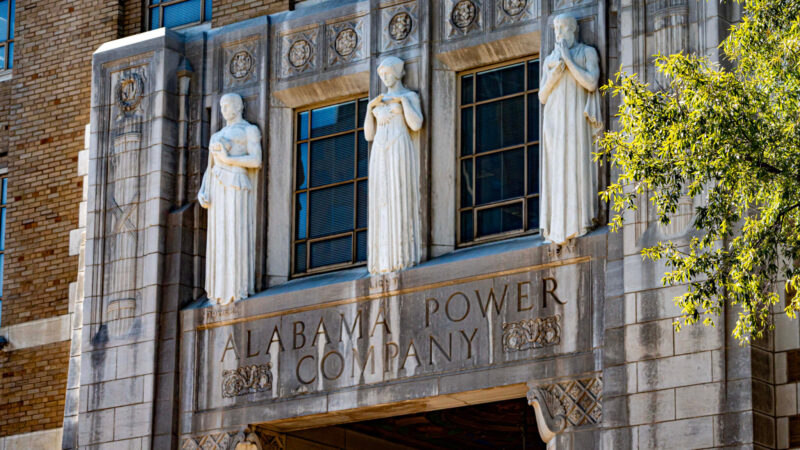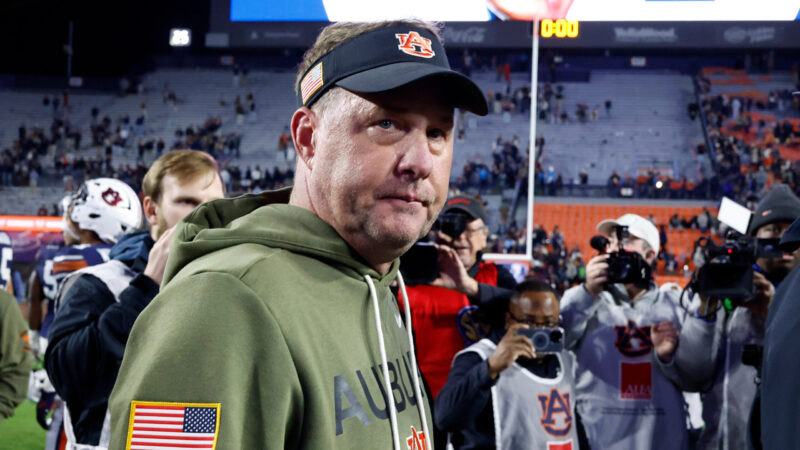Matters of Choice: Race, Economics and Choice in North Carolina
In North Carolina, students get their choice of charter schools, but those schools are increasingly divided by race. In this southern state where some of the nation’s most noted school desegregation battles were waged, a recent Duke University study shows that many schools are either predominantly white or predominantly minority. Reema Khrais of WUNC reports on efforts to change that trend as part of the Southern Education Desk series, “Matters of Choice.”
Kindergartner Emarie breaks out into song as she cleans up.
“Row, row your boat crossly down the stream… life is but a dream!”
It’s toward the end of class at Central Park School for Children in Durham. Emarie and her classmates are putting paint supplies away after a pretty successful day creating masterpieces.
As principal John Heffernan walks around the kindergarten class, he notes it looks and feels different than it did just a few years ago. Frankly, it’s not as white or upper middle class as it used to be.
“There’s a greater diversity of viewpoints. There’s a greater diversity of perspectives,” says Heffernan.
How did this demographic shift happen? A couple of years ago, this school tried something no other charter school in the state has done before: it began giving students from low-income families a better chance of getting in. They get priority on a waiting list of hundreds of kids.
Before this weighted lottery, only six percent of kids qualified for free or reduced meals. Today, according to Heffernan, the number has grown to 18. The goal is 40.
As the school becomes more economically diverse, the number of white students is slowly dropping while the number of Black and Latino kids is slowly rising. It is a story very different from what’s happening outside of its walls.
Helen Ladd, a professor at Duke’s Sanford School of Public Policy, says the state’s charter schools have always been racially imbalanced and it’s only gotten worse.
“We’ve got white charter schools – disproportionately white charter schools – and disproportionately minority charter schools. It’s what we’ve worked hard to avoid. It’s a pattern worth worrying about,” says Ladd.
Initially, black students were over-represented in charter schools. Today, that’s true for white students. The percentage of charter school kids in mainly white schools has almost doubled since the late 1990s.
Ladd applies her training as an economist to help explain why that’s happening. On the demand side, you’ve got the parents. She says a lot of research shows that families do take into consideration the racial mix of a school when deciding where to send their kid.
“The other side is what the charter school operators are trying to do, that’s the supply side.”
Charter schools are public schools – but, unlike traditional ones, they do not have to offer free and reduced meals or bus transportation. Ladd thinks they should, because “if they don’t, then they’re not really open to all students who need those services.”
Joe Maimone, a member of the state’s charter school advisory board, disagrees with that philosophy. He says parents want the best schooling option for their kid, “even if it means they have to sacrifice a little bit more in terms of not having the free lunch or not having the transportation door-to-door versus a stop five or ten minutes down the road.”
Plus, money is tight. Maimone argues that charter schools don’t get the same amount of funding as traditional public schools. Still, options exist, including carpools and buses meeting in central locations.
“Charter schools have done, and will continue to do everything they can to make sure transportation is not a barrier,” he says.
Back at Central Park School for Children, Zoila Salazar has the day off and is walking her kindergartner to class.
Salazar and her son had a higher chance of getting into this school last year because of their socioeconomic status. She also says it was important that the charter school was able to help out with transportation and meals.
“He wouldn’t be here right now if they didn’t provide transportation or free meals, I wouldn’t, because it would’ve been so hard for me to bring him,” says Salazar.
Central Park had to come up with creative approaches to increase school diversity, like using the weighted lottery. Some see it as a way of helping to fulfill one of the big goals of charter schools: to serve disadvantaged students.
This report is supported by a grant from the Corporation for Public Broadcasting.
How Alabama Power kept bills up and opposition out to become one of the most powerful utilities in the country
In one of the poorest states in America, the local utility earns massive profits producing dirty energy with almost no pushback from state regulators.
No more Elmo? APT could cut ties with PBS
The board that oversees Alabama Public Television is considering disaffiliating from PBS, ending a 55-year relationship.
Nonprofit erases millions in medical debt across Gulf South, says it’s ‘Band-Aid’ for real issue
Undue Medical Debt has paid off more than $299 million in medical debts in Alabama. Now, the nonprofit warns that the issue could soon get worse.
Roy Wood Jr. on his father, his son and his new book
Actor, comedian and writer Roy Wood Jr. is out with a new book -- "The Man of Many Fathers: Life Lessons Disguised as a Memoir." He writes about his experience growing up in Birmingham, losing his dad as a teenager and all the lessons he learned from various father figures throughout his career.
Auburn fires coach Hugh Freeze following 12th loss in his last 15 SEC games
The 56-year-old Freeze failed to fix Auburn’s offensive issues in three years on the Plains, scoring 24 or fewer points in 17 of his 22 league games. He also ended up on the wrong end of too many close matchups, including twice this season thanks partly to questionable calls.
In a ‘disheartening’ era, the nation’s former top mining regulator speaks out
Joe Pizarchik, who led the federal Office of Surface Mining Reclamation and Enforcement from 2009 to 2017, says Alabama’s move in the wake of a fatal 2024 home explosion increases risks to residents living atop “gassy” coal mines.








